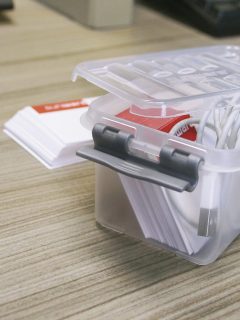According to the results of RAJA’s e-commerce survey, one of the biggest priorities, alongside ecology and safety, is optimising transport costs. How to achieve this in reality? Shipping costs can be influenced mainly by choosing the right packaging materials and calculating the right shipping price.
A survey of e-commerce merchants conducted by RAJA showed that 20% of those surveyed put reducing shipping costs at the top of their priorities. “Shipping is expensive and as a result reduces the profitability of e-commerce stores. Merchants are therefore looking for a solution to reduce shipping costs while maintaining a high level of delivery quality, which can often be a big dilemma,” comments Gabriela Fabianová, CEO of RAJA.
Reducing costs should not be at the expense of packaging quality
Reducing the costs associated with packaging and transporting goods should definitely not be at the expense of the quality of the materials used. In this case, it could increase the risk of damage to goods, which is associated with a further range of costs and loss of customers. Packaging can be efficiently optimised in other ways than taking the risk of using cheaper packaging material. Factors influencing the cost of shipping include:
● height and weight of the product
● packaging design
● packaging material
● Bulk weight, i.e. the space taken up by the product during transport.
Another decisive factor is the so-called transport density of the packages, which can be understood as weight per cubic metre. “Transporting 20 kilograms of feathers can thus be more expensive than transporting 20 kilograms of iron,” explains Gabriela Fabianová. “The right packaging to fit on a pallet or in a truck can reduce costs by up to 10%,” she adds.*
Aleš Juřina from the Spolek milců čaje shop confirms this. “The Czech Post has recently started charging freight according to the length of the longest side. Now we have the advantage of packaging from RAJA, where we can choose the optimal size of the package. I think we can save around 10-15% of the shipping costs thanks to suitable packaging,” Juřina describes the situation.
How to find out the optimal bulk weight?
One of the biggest current trends in logistics is the reduction of packaging density, and companies that do not pack their products efficiently are literally paying the price for it – the so-called bulk weight is now used by most international shipping companies, such as UPS, TNT, DPD or Der Kurier, to determine shipping prices. PPL also counts on the volumetric weight for international shipments, and Slovenská pošta uses it for oversized shipments over 850 kg.
Bulk weight is calculated according to the dimensions of the package: width x length x height / 5000. The result gives the bulk weight, which is compared with the real weight of the parcel. The latter is charged by the higher carriers. The optimum volumetric weight is therefore that which is closest to the real weight.
Thanks to a simple calculation, you can find out how much you can save by optimising the dimensions of the package.
Instead of a one-size-fits-all packaging strategy, it therefore pays to try individual packaging tailored to the products being transported. If the product range is really varied, the ideal solution for online retailers is to use cartons with adjustable height (telescopic cartons), which can be easily adapted to the size of the contents.
“By optimising packaging, it is possible to save money in the long run on all fronts. But studies suggest that many packages contain up to 40% empty space in the cartons that needs to be filled with something. Thus, poorly chosen box sizes not only cost money, but also put a strain on the environment – they take up more space in transport vehicles and consume an unnecessary amount of material. It is therefore worth taking the bulk weight into account even if the transport company does not charge anything for the larger dimensions,” adds Gabriela Fabianová.
* 200 respondents took part in the survey, of which 150 were only in the e-commerce sector.
Save wisely on packaging
According to RAJA data, material costs account for an average of 60% to 80% of total packaging costs. The cost of material depends on various parameters such as type, quality or the packaging manufacturer itself. Different designs of the same volume sometimes need different amounts of material also play a role. For some types of materials, “swapping” the height and width of the packaging can save 20% of the material used.














